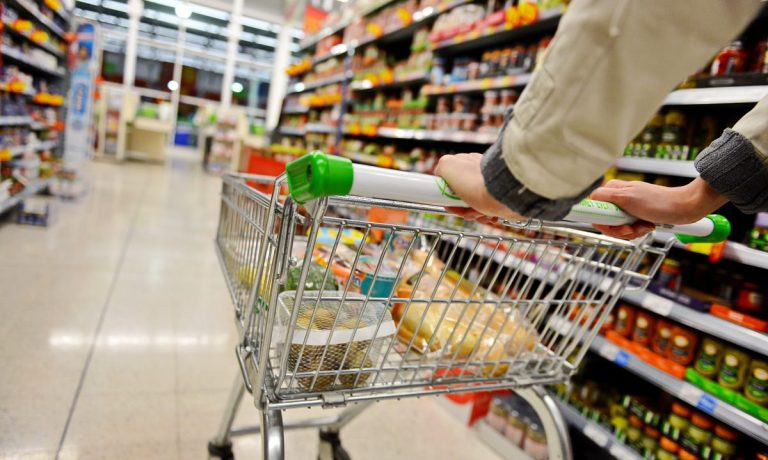Frictionless Checkout Brings eCommerce Convenience into Stores to Drive Conversion

Around the world, the grocery shopping experience is growing increasingly frictionless. Where just a few years ago, cashierless checkout technology was an out-there new technology being piloted at a select few small-format Amazon retail stores, now a range of solutions providers are competing to offer the service to grocers, and the technology is being implemented at stores around the world.
In the last month, Tesco, the largest grocery chain in the United Kingdom by market share and one of the top 10 grocery chains in the world by sales, opened its first frictionless store in London, powered by computer vision startup Trigo, and Essen, Germany-based global discount grocery chain Aldi announced its own pilot test in partnership with the computer vision company.
Read more: Tesco Announces Frictionless Checkout Store as Brick-and-Mortar Grocers Tap Self-Service
Grocery Roundup: Aldi Goes Cashierless; Jokr Adds Alcohol
Yair Holtzer, vice president of business development at Trigo, spoke with PYMNTS about how cashierless checkout can boost the metrics most important to grocers’ success in today’s competitive marketplace.
“[Consumers] say that, in the beginning, it feels like stealing, but then you get addicted to the feeling,” Holtzer said. “People want the experience to be smooth as possible … You can find hundreds of studies that show that, when the experience of your shopping is better, whether it’s online or physical, then the loyalty of the customer increases, the traffic of visits increases, the size of basket increases … and also the conversion for new customers increases.”
In fact, frictionless technology such as Trigo’s maximizes the benefits that typically drive consumers to take advantage of self-checkout options in the first place. The PYMNTS study, Today’s Self-Service Shopping Journey: The New Retail Expectation, created in collaboration with Toshiba, which surveyed over 2,000 U.S. consumers about their shopping behaviors, found that more than two-thirds of grocery shoppers utilizing self-service checkout report doing so because they believe it is faster than traditional checkout. Additionally, more than half of grocery’s self-checkout users are motivated by the option to skip the traditional checkout line.
More details: Consumers Want Self-Service Checkout Options But Rarely Get to Use Them
The Google Stamp of Approval
After years of Trigo working with Google to power its products behind the scenes, the two companies publicly announced a partnership over the summer.
“On a business level, in the last few months, Google got much more interested, seeing how Trigo is evolving,” Holtzer explained. “They are seeing the evidence now … It’s a very good endorsement that Google want to increase its level of partnership with Trigo.”
He noted that the two companies are in talks with “retail sector leaders” to find new use cases for the technology.
Compared to its largest competitor, Amazon, Holtzer said Trigo sets itself apart by offering a much lower barrier of entry. Whereas Amazon is building its Just Walk Out stores from the ground up, Trigo retrofits stores with its computer vision technology.
“The retrofit method is what we need in order to answer the demand from existing retailers like Tesco,” said Holtzer, adding that the Tesco store that opened last month was converted within “a few days of work.”
Can’t Touch This
Holtzer noted that the spread of the coronavirus increased the demand among consumers for quick and low-contact retail technologies.
“People prefer to touch fewer things, to not be in close interaction with too many people, and to have an in-and-out experience,” he said.
These COVID-19 concerns remain a significant factor for many consumers. According to PYMNTS data, contagion concerns still remain a motivator for almost one out of five grocery shoppers using self-checkout technology, with 19% of these consumers citing social distancing as a reason for taking advantage of the technology.
Additionally, research from PYMNTS’ June 2021 survey featured in the report “What Consumers Expect From Their Grocery Shopping Experiences,” produced in collaboration with ACI Worldwide, found that 59% of eGrocery customers reported that one of the reasons that they shop online is that they worry about contracting COVID-19 when shopping in stores.
See also: Digital Features Can Help Grocers Win Over 43% of Shoppers
This turn to eCommerce has also increased consumers’ demand for quicker and more convenient in-store experiences.
“Shoppers have gotten much, much more used to shopping online, so even if they’re coming to the store, they’re interested in a frictionless experience,” said Holtzer.
The Path Forward
In the next 12 months, Trigo plans to open an autonomous supermarket in the United States and to continue to refine its products with increasingly robust data about how consumers are interacting with the technology.
Over the next several years, Holtzer believes that adoption will soar, with consumers spending more at grocery stores. He cited the example of Starbucks’ success with digital wallets in its app as an example of how streamlining payments can drive sales.
Additionally, he believes that demand for grocers will sustain this rapid growth, mitigating the amount of labor that retailers need to deploy at checkout, and as such helping them navigate the current labor market while keeping stores open more hours.
“In five years, I believe that you will have thousands of autonomous stores,” said Holtzer, specifying that these will include both small-format convenience stores in dense, urban areas and larger-format supermarkets. “You will be able to still buy in the traditional way, if you want … but you will also be able to choose the green lane to just walk in, grab the items and walk out.”